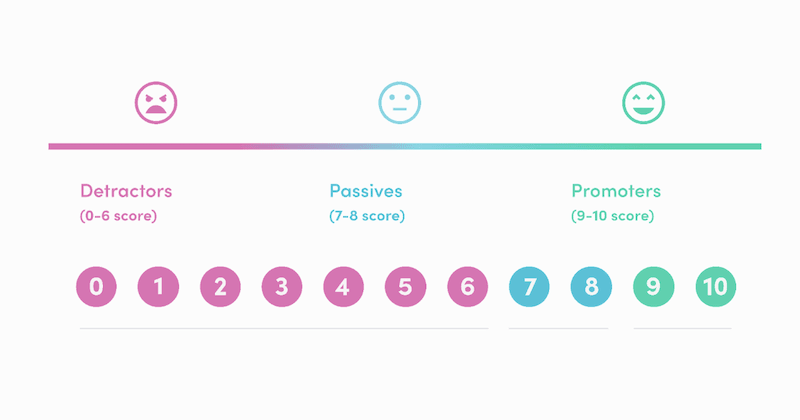Updated: January 3, 2025- 8 min read
You’ve poured blood, sweat, tears (and perhaps a part of your sanity) into all phases of the product development process from ideation right through to beta testing. Congratulations! It’s time for product launch! But before you break into a giddy dance of glee, ask yourself these two questions: “How can you measure product launch success?” and “Which metrics give the best insight into product performance?”
We get it. After finishing a big project, you probably just want to bask in the satisfaction of a job well done, or take a nap for 48 hours, or both. But before you do that, it’s crucial to take some time to define your metrics for success. Here’s why:
Why do product launch metrics matter?
It might seem obvious, but without metrics, you can’t track your progress or measure product launch success. For example, if you have a goal of acquiring 500 active users within one month of the launch, you’ll be able to see if you’re on the path to achieving your target. If by mid-month your metrics reveal you’re still far off from your goal, this indicates that you should iterate your strategy. If iteration doesn’t bear any fruit, metrics can help you decide if you should kill the product entirely.
Furthermore, while product management tools can help to keep everybody on the same page, setting metrics is also essential. Product launch metrics foster alignment and facilitate communication between the various stakeholders involved, such as marketing and sales teams.
And if you’re still not convinced about the importance of product launch metrics, listen to this: businesses that track key metrics are twice as likely to achieve their business targets.

How to Measure Product Launch Success: 5 Key Metrics
Evidently, metrics are vital, but which ones should you track? While there are countless product launch metrics out there, you shouldn’t track every single one. To avoid drowning in a sea of metrics, it’s essential to pinpoint the most relevant to your product and goals. So let’s take a look at five key metrics that can help you measure product launch success.
Active Users (AUs)
Use: Engagement Optimization
Formula: Users who do X in a given time frame (usually daily or monthly)
This metric gives a great overview of a digital product’s overall health, particularly when it comes to engagement optimization and long-term growth. Usually measured as Monthly Active Users (MAU) and Daily Active Users (DAU), these metrics help you to track if your user base is growing, and how ‘sticky’ your product is for end-users.
Determining what constitutes an MAU or DAU depends entirely on your product. It’s rarely as simple as someone just opening an app and closing it again. Instead, product managers need to determine a meaningful minimum action taken to decide what counts as an active user. For example, if your product is a messaging app, the minimum action might be sending one message. For an audio story app, it might be playing at least one minute of a story.
By measuring engagement in this way, you’ll get invaluable insights into how many people are actually finding your product useful. Clearly a metric of product launch success!
Conversion Rate (CVR)
Use: Funnel optimization
Formula: % of users who make it from one stage of the funnel to the next
This next metric is important for understanding how many people landing on your website or app take the action you want them to. This could include enrolling in an online course, upgrading to the premium version of your new tool, or purchasing a subscription.
For example, by measuring CVR, you may find that you have a lot of traffic to your website which converts nicely into clicks on your call-to-action, but then you see there’s a huge drop-off once users reach the payment screen. This gives you food for thought. Have you not provided enough payment options? Is the payment process too long or complicated? Is there a bug?
Alternatively, you may find that only a small percentage of your users find your new feature, but the conversion rate is very high. This indicates you have a problem with discoverability. Instead of scrapping the feature, you decide to go over your user onboarding process to increase discovery.
Tracking CVR helps you to identify drop-off points and roadblocks early on in your product launch and take action to improve and stay on the road to product launch success.

Customer Retention Rate & Churn
Use of Retention Rate: Evaluating customer loyalty and satisfaction
Formula for Customer Retention Rate: (Customers at end - acquired) / customers at start x 100
Use of Churn rate: Preventing a leaky bucket through product optimization and removing drivers of churn
Formula for Churn: Canceled / Customer Base
Retention rate and churn rate are two sides of the same coin. While churn rate shows you the number of customers lost within a given timeframe, retention rate shows how many you keep.
Tracking these metrics is important because it's great to gain new customers, but if they’re dropping off after only a few days (or in a few minutes in the fickle world of apps), then you’ve essentially got a leaky bucket instead of a product. There’s no point filling the bucket with new users unless you can keep them. Instead, you want to aim for a high Customer Retention Rate, where more people return than leave.
As Airbnb Growth Product Manager says,
Companies that haven’t understood retention, and stepped on the gas too fast with their acquisition, have then lost all of their users very quickly. Without users, your product is nothing.
You’ve been warned. A high churn rate is an indicator that your product isn’t delivering what it promises and that you need to go back to the drawing board. A low churn rate on the other hand suggests that users are finding value in your product and like it enough to stick around.
Don’t forget though that not all churn is bad! For example, some dating apps are made to be deleted once they’ve served their purpose of helping users to find a partner. In fact, apps like Hinge actually market themselves with the slogan "the dating app designed to be deleted”.
Net Promotor Score (NPS)
Use: Quantify consumer satisfaction
Formula: % promoters - % detractors
Net Promoter Score (NPS) is a great way to measure the sentiments of your users. An NPS segments your users into three categories based on how they rate your product out of 10, providing valuable insights into how well-received your product is.

1-6 = Detractors
Oops! Better try harder next time. These people use your product, but only out of necessity/lack of alternative, and wouldn’t recommend it to a friend.
7-8 = Passives
Getting better here but there’s still room for improvement. These people like your product, but you haven’t delighted them.
9-10 = Promoters
Wow! This is what we want to see more of. Promoters are gold dust. They’re your number one fans who will actively promote your product within their circles.
NPS is a helpful metric for gauging how consumers are responding to your product in the real world as well as identifying areas for improvement, and driving product innovation – all key factors for a successful product launch.
Customer Satisfaction (CSAT)
Use: Customer service and core feature optimization
Formula: satisfied customers / total
Similarly to NPS, tracking CSAT gives you insight into how your customers feel. But while NPS is often used to measure customers' happiness with the entire user journey, CSAT allows you to be more specific, often measuring users’ satisfaction with individual processes and features.
For example, you could ask users to score your website’s newly developed checkout experience out of 10 in the form of a one-tap survey. This makes CSAT an excellent metric for gaining very targeted feedback about a specific feature in order to understand what impact it has on your users.
Summary of Key Metrics to Measure Product Launch Success
As you’ve seen, tracking strategic metrics such as active users, CVR, customer retention rate & churn, NPS, and CSAT:
gives you clear and actionable insights
helps you measure the success of your product launch
provides you with early warning signals if something is going wrong
helps you to iterate and improve your product.
Learn more with Product School
Want to find out more about metrics and how to achieve product launch success? Learn how to use analytics to generate key insights in our Product Manager Certification.
Enroll now and learn directly from proven Product Leaders at top Silicon Valley tech companies like Google, Meta, and Amazon, leveraging their real-world experiences, frameworks, and approaches to help you excel.
Updated: January 3, 2025





